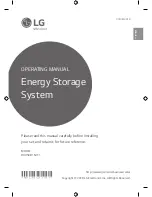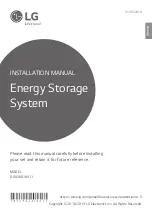
F3 Series Charger Manual
14
Symptom
Possible Cause
Test
Corrective Action
Line voltage less
that charger's
specified operating
range
Measure AC line voltage
Use larger gauge AC wires or
contact utility company
High output
volts / High
DC alarm
Control board
failure
Replace with known good
board
Replace board
Misadjusted Float
Voltage pot on
control board
Adjust pot and see if output
voltage is affected
Adjust float pot to correct
output voltage
Remote temperature
sensor failure
Remove Remote Temp.
Sensor connector on control
board J6
Replace Remote Temp.
Sensor
High ripple
voltage
Control board
failure
Replace with known good
board
Replace board,
Excessive line
voltage imbalance
Measure and compare the
three AC phase voltages
Contact electrician or utility
company
Power diode / SCR
failure
Test all power diodes with
meter, perform SCR test on all
SCRs (figure 5.2)
Replace all open or bad parts
AC phase failure
Check for failure of one phase Contact electrician or utility
company
AC line voltage too
high
Check for AC line voltage
over charger's specified
operating range
Contact utility company
Bad filter capacitor Disconnect capacitors one at a
time and check for change in
output voltage
Replace capacitor that
corrected output voltage
when removed
Alarms or
indicators not
functioning
Alarm, display, or
control board failure
Replace each board in turn
with a known good board
Replace failed board(s)
5.2 Component Diagnostic Tests
Test #1: With transformer leads disconnected, energize the transformer with the normal AC supply
voltage. Measure entire secondary voltage. It should be 1.1 times the nominal battery voltage.
Test #2: With one or both leads disconnected from the inductor, measure the resistance across the
inductor terminals. If the resistance is near a short circuit condition, the inductor is OK.
Test #3: Power Diodes, units with SCR/diode modules
See the attached SCR/diode module troubleshooting table to determine module condition.
Test #3: Power Diodes, units with stud-mount diodes
Using a digital multimeter set to the diode testing function, measure the junction voltage across the
diode. A reading of between 0.4 volt and 0.8 volt in the forward polarity direction and infinity in the
reverse polarity direction indicates a good diode.
Test #4: SCRs, units with SCR/diode modules
See the attached SCR/diode module troubleshooting table to determine module condition.
Test #3: SCRs, units with stud-mount SCRs






































